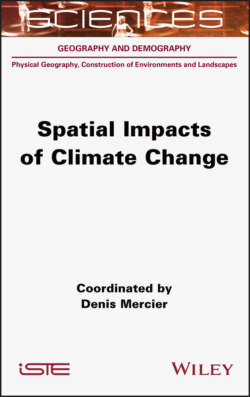Читать книгу Spatial Impacts of Climate Change - Denis Mercier - Страница 29
2.4.1.2. The melting of the Antarctic
ОглавлениеBetween 2006 and 2015, the Antarctic ice sheet lost ice mass at an average rate of 155 ± 19 Gt per year (0.43 ± 0.05 mm per year), mainly due to the rapid thinning and retreat of large glaciers downstream of the continent draining the West Antarctic ice sheet, especially in the Amundsen Sea and Wilkes Land in the eastern part (IPCC 2019).
The total mass loss of the Antarctic ice sheet is increasing every decade. It increased from 40 ± 9 Gt per year in 1979-1990 to 50 ± 14 Gt per year in 1989-2000, 166 ± 18 Gt per year in 1999-2009 and 252 ± 26 Gt per year in 2009-2017 (Rignot et al. 2019; see Figure 2.8).
Figure 2.8. Mass balance of the Antarctic ice sheet. For a color version of this figure, see www.iste.co.uk/mercier/climate.zip
COMMENT ON FIGURE 2.8.- The size of the circle is proportional to the absolute magnitude of the anomaly in D (dD = SMB1979-2008 - D) or SMB (dSMB = SMB - SMB1979-2008). The color of the circle indicates a loss in dD (dark red) or dSMB (light red) relative to a gain in dD (dark blue) or dSMB (light blue) in billions of tons (1,012 kg) per year. The dark color refers to dD; the light color refers to dSMB. The graphs show totals for Antarctica, Antarctic Peninsula, West Antarctica and East Antarctica. The bottom is the total mass balance distributed over the catchments with a color code ranging from red (loss) to blue (gain) (source: Rignot et al. 2019).
Between 2009 and 2017, mass loss was dominated by the Amundsen and Bellingshausen Sea sectors in West Antarctica (159 ± 8 Gt per year), Wilkes Land in East Antarctica (51 ± 13 Gt per year), and the Western and Northeastern Peninsula (42 ± 5 Gt per year). The contribution to sea level rise from Antarctica averaged 3.6 ± 0.5 mm per decade with a cumulative 14.0 ± 2.0 mm since 1979, of which 6.9 ± 0.6 mm from West Antarctica, 4.4 ± 0.9 mm from East Antarctica and 2.5 ± 0.4 mm from the Peninsula (i.e. East Antarctica is a major contributor to mass loss). Throughout the period, the mass loss was concentrated in the closest to deep circumpolar water (DCW) that is warm, salty, subterranean, which is consistent with the enhanced polar winds pushing DCW towards Antarctica to melt its floating ice shelves, destabilize glaciers and raise sea level (Rignot et al. 2019).
